Pirates of the West Indies and the Indian Ocean of the second half of XVII - early XVIII century (continued)
Before the march, the pirates always entered into a special agreement (usually in writing), which stipulated the important issues of the upcoming enterprise. It could be called differently: charter, agreement, code (eng. Code, fr. Chasse-partie). It stated what share of the booty the captain and crew of the ship should have received, compensation for injuries and injuries, encouragement for the distinguished, punishment for the guilty. On the content of such agreements are not very different from each other.
Here are the articles of the agreement of Captain William Kidd (they were added to the materials of the criminal case as evidence of the prosecution):
The person who first spotted a merchant ship must receive piastres 100.
Any person who does not obey the commander must be deprived of his share of loot and punished as the captain of the ship deems necessary.
Anyone who were afraid at the time of the attack should be deprived of their share of loot.
Anyone who was drunk at the time of the attack should be deprived of his loot.
Any person who incites insurrection should be deprived of his share of loot and punished as the captain of the ship deems necessary.
Anyone who cheats with the captain or his crew in capturing loot, money, goods, or anything worth more than one piastre must be deprived of their share of loot and landed on the nearest uninhabited island, which will fall in the path of the ship.
Any money and other mining must be shared among crew members. "
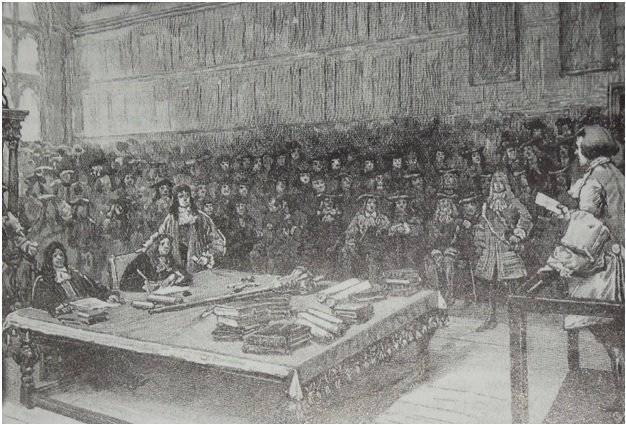
But the rules on the ship captain Bartolomeo Roberts:
Each crew member must be familiar with the list of prizes (loot - Approx. Author) on board, because in addition to their own share it is allowed to change clothes. But if they deceive their comrades at least a dollar in the form of dishes, jewelry or money, they will be landed on an uninhabited island.
It is forbidden to play dice and cards for money.
Candles and lamps should be extinguished at eight o'clock in the evening, and if someone from the crew wants to drink after this hour, he will have to do it on the open deck in the dark.
Each crew member must contain his weapon, sabers and pistols clean and always ready for battle
Boys and women are not allowed to be among the crew. If someone is seen in the seduction of a woman and in a disguised form takes her to the ship, he will be killed.
Unauthorized left the ship or out of hand-to-hand combat during the battle, must be punished by death or landing on an uninhabited island.
Fighting is forbidden on board, but each quarrel must be completed by a duel on sabers or pistols on the shore. At the quartermaster's command, the duelists, who have their backs to each other, will have to turn and immediately shoot. If someone does not do this, the quartermaster must dislodge the weapon from his hands. If both miss, they will have to continue to fight with sabers, and the first blood shed will reveal the winner.
No one can talk about lifestyle changes until everyone’s share of pounds reaches 1000. Anyone who becomes a cripple or loses a limb in the service must receive 800 piastres from the general supply, and for lesser injuries - in proportion.
The captain and quartermaster each receive two shares of the prize each, the gunner and the boatswain each receive one and a half, the rest of the officers receive one share and a quarter, and ordinary gentlemen of fortune receive each share.
Musicians have the right to rest on Saturdays. On other days, with permission. "
If the agreement was in writing, all team members signed it. Illiterate put a cross. It is curious that in the preserved pirate codes the murals are not arranged as is customary (and nowadays too) - at the bottom of the document, and chaotically throughout the free space. So the pirates did specifically to follow the important rule: on the pirate ship everyone is equal, there are no first and last.
Extremely few pirate codes have survived to this day, since pirates attacked by military ships fleet first tried to destroy the agreement. Otherwise, such an agreement could fall into the hands of the authorities, which served as irrefutable evidence of guilt and meant the fastest way to the gallows.
Over those who violated the provisions of the statute, the pirates themselves decided to court. Here are the most common punishments that were used by pirates to guilty of violating their laws, and also as torture to captured prisoners, to obtain information about hidden values:
Bleeding - Numerous shallow cuts were made with guilty knives (as a rule, they did not lead to death).
Immersion in water - the man’s head was lowered into the water and held there until he began to choke.
Flogging - whipping. If 40 punches were ordered, then such a punishment was called "the law of Moses."
Hanging - mainly used for the treacherous murder of a teammate (then the most common form of the death penalty).
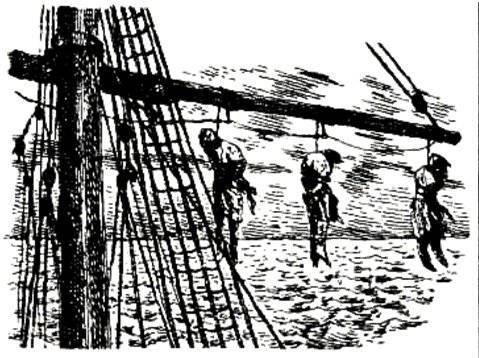
Crowing (pulling under keel) - using a rope (hook ends), a person was dragged under the keel of the ship from one side to the other across the ship (often resulted in death: if the person did not choke, he would get serious cuts from the sharp edges of the shells that overgrown the bottom of the ship). Produced one, two or three times depending on the offense.
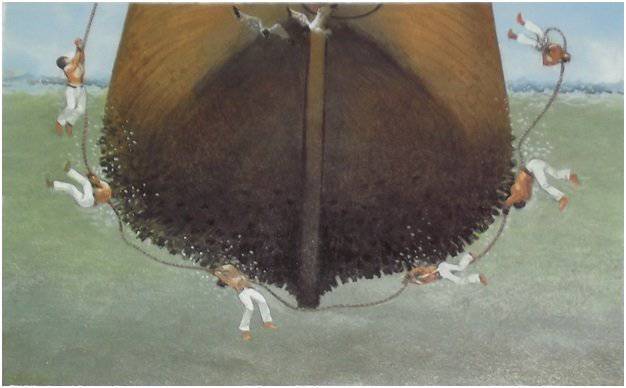
Throwing overboard - people just thrown into the open sea.
Maroning (landing) - the person was left on a desert island.
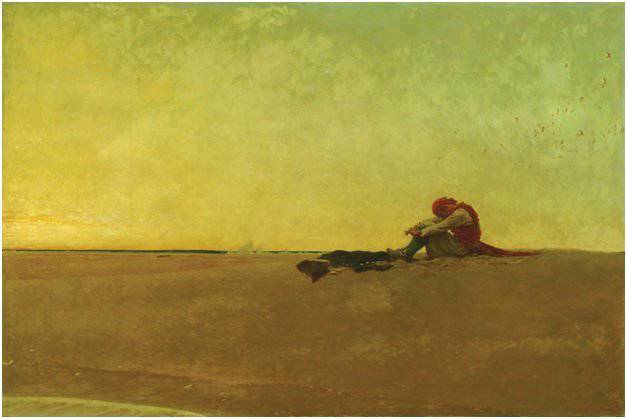
Whip-Nine-Tailed - A man was given beats with a whip-nine tails (as a rule, if he assigned several dozen blows, he would die, especially if there were hooks or blades on the whip). The sailors punishment is also known as "Captain's daughter." If after such an execution the guilty remained alive, then his back was rubbed with salt — not to increase the suffering, but to avoid blood from deep wounds.
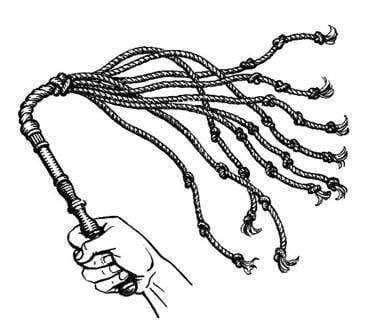
"Island for one" - people were thrown into the sea with a piece of wood.
Towing - a man tied to a rope was dragged behind the ship (sometimes it led to death: a man choked or a shark could attack him).
But the punishment in the form of "walking on the board" from the pirates did not exist. The first mention of such punishment refers to 1785, after the golden era of piracy. Pirates never forced a person to walk across a board — artists ascribed to them at the end of the 19th century, and then it fell into literature and cinema.
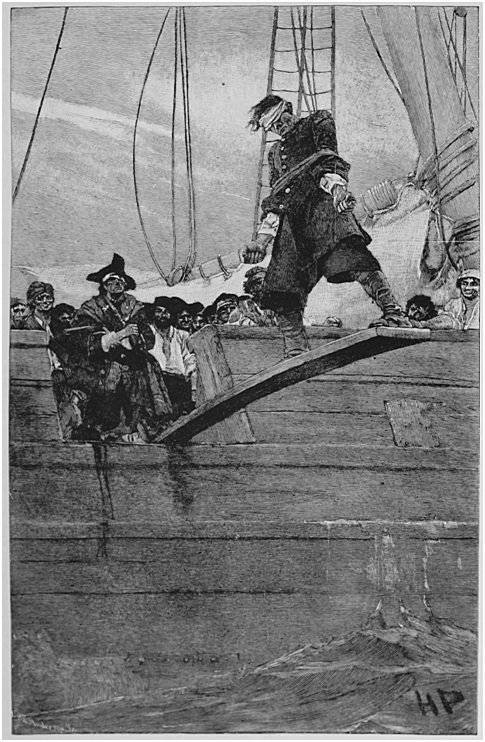
These punishments may seem cruel to modern man, but for their time there was no excessive cruelty in them. Rather, on the contrary, taking into account that in Europe in the XVII century. and partly in the XVIII century. Other types of executions were used, such as wheeling and quartering; pirate punishments look relatively humane.
Of course, other punishments were also used by pirates, although not as common. For example, the one who concealed part of the loot from his comrades could simply be kicked out of the ship and henceforth they were never taken to the pirates. For the murder of a member of his team, the culprit could be tied to a tree instead of hanging, and he himself chose the person who would kill him.
The order on the pirate ship was not much different from the life of peaceful sailors. Although, according to eyewitnesses, he was not distinguished by strict discipline. Everyone considered himself a free man, not obliged to obey anyone except the captain. Yes, and the captain obeyed often reluctantly.
William Dampier, himself a famous pirate of the second half of the 17th century, describing the three-month voyage with filibusters off the coast of Panama, noted:
And further:
The pirate was a free man and could at any moment leave the ship, join another team that agreed to accept him. He could also go ashore at any time and abandon the pirate deed.
Here's how the governors of Tortuga and the Shores of Saint-Domengue Jacques Nepve de Poinsy described the filibusters in a letter to the French government in 1677:
The fact that the pirates always drank a lot of rum also did not contribute to discipline. Often this led to sad consequences.
So, being off the eastern coast of Hispaniola during the march of the Morgan flotilla on the cities of Maracaibo and Gibraltar in 1669, the pirates got so drunk that they blew up the powder magazine on the flagship of the flotilla, the royal thirty-six-gun frigate, transferred to Morgan for the expedition by the Governor of Jamaica, Tomom, to carry out the expedition to the expedition by the Governor of Tommom Frigate, transferred to Morgan for the expedition by the Governor of Jomica. About thirty pirates died, and Morgan survived only by luck.
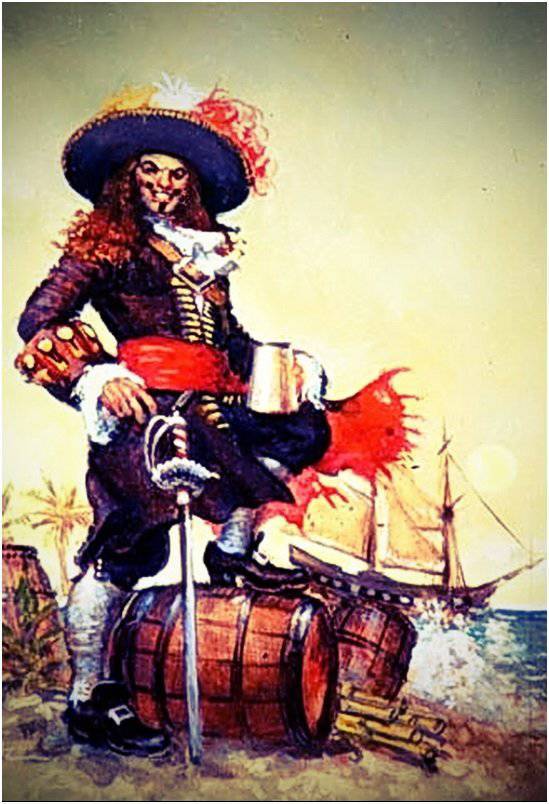
Sometimes drunkenness led the pirates straight to the gallows. 15 November 1720, located off the west coast of Jamaica near Cape Negril Point, a team of pirates led by John Rackham, nicknamed "Calico Jack," arranged a grandiose binge. By evening, the pirates were so drunk that most of them could not even climb onto the deck of their ship to repel the attack of the captain Jonathan Barnet, who had taken them to the boarding of the twelve-gunned Eagle sloop, which had been sent by Jamaican authorities to catch Cotton Jake.
Alcohol also failed the pirates of Bartolomeo Roberts (although Captain Roberts himself did not drink alcohol), nicknamed "Black Bart." In early February, 1722, the ships of Roberts anchored in the bay at Cape Lopez on the west coast of Central Africa. There they were discovered by 5 in February 1722 of the English warship Swallow, commanded by Captain Chaloner Augl. On the eve of the decisive battle of 10 in February of 1722, the pirates seized a merchant ship with stocks of alcohol and got so drunk that at a critical moment many were not ready for battle. The pirates suffered a crushing defeat, and Black Bart himself was killed by a volley of a canister from Swallow while trying to break out of the bay.
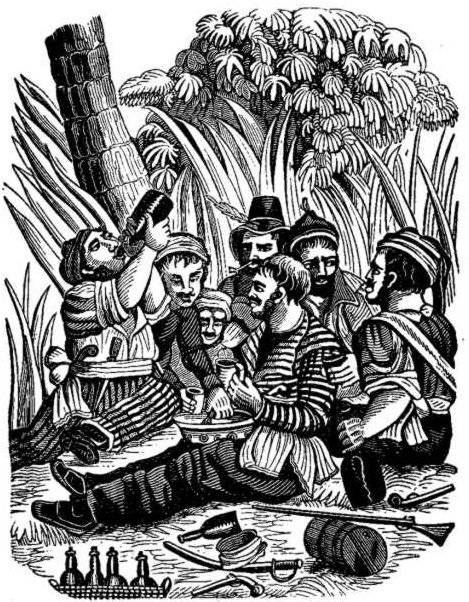
The social organization of pirates was notable for its democracy. All positions on the ship (including the captain and quartermaster) were elective. All important decisions were also made by a majority vote at the meeting. Anyone had the right to speak at such meetings all that he considered necessary.
Here is what Exvemelin wrote about the relationship of pirates:
And further:
Conflicts between team members, if the law was not violated, were settled through duels. Since duels were usually forbidden on board the ship, rivals went ashore, carrying pistols and knives (or boarding sabers) with them. The quartermaster was the quartermaster. Usually they fought before the first blood.
However, from this one should not draw an idyllic picture of the fact that the pirates were a model of virtue and decency in relation to each other and nobility in relation to captives. Biographies of sea robbers are literally crowded stories regular rebellions, betrayals, fights, quarrels over the division of booty and killings. Most pirates were not at all noble sea robbers, whom they constantly write about in novels and make films.
According to eyewitnesses, the same Edward Teach did not even bother to wait while robbing the captured ships: if the victim could not quickly remove the ring from his finger, Blackbeard snatched the sword, chopped off his hand and threw it into the bag.
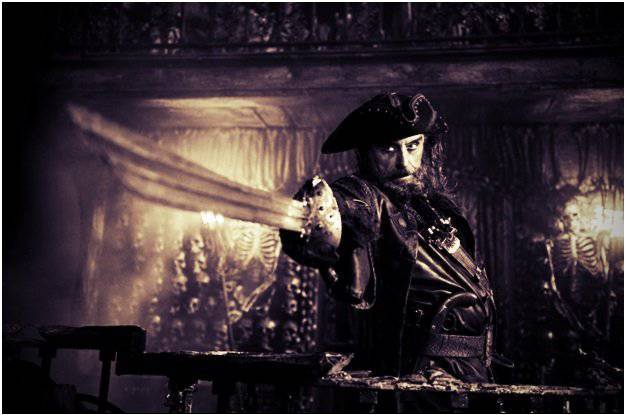
One night, Blackbeard drank in a mess room with members of his crew, including a pilot and a senior officer, Israel Hands. While drinking, Blackbeard pulled out two loaded pistols and put them on the table, next to him. After some time, Captain Tich suddenly put out the candle and in the dark fired two pistols, although no one gave him the slightest reason for such an act. As a result, Hands got a bullet in the knee and remained a cripple for life. When Blackbeard was asked why he did this, he said:
French pirate mid XVII. Francois L'Olone, having captured a Spanish ship at the mouth of the Esther River, ordered all Spanish sailors on board to be beheaded by all those who had surrendered and were no longer dangerous. Although I could get a ransom for them.
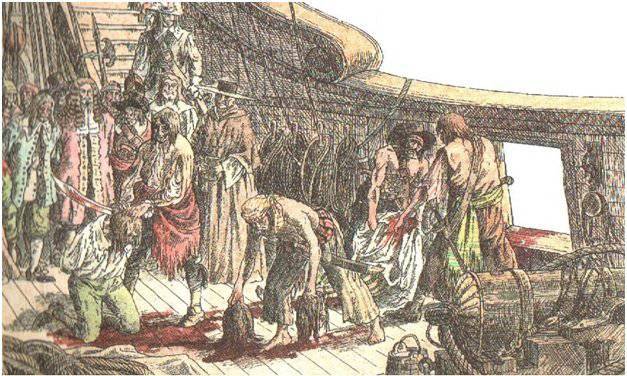
In January, 1722 ships under the command of Bartolomeo Roberts arrived at one of the slave trade centers of Slave Coast - Vida. There, the pirates seized eleven slave ships, and then demanded a ransom from the captains. Everyone paid what they could with the exception of one Portuguese captain. Then Black Bart ordered that the two ships of this captain be burned alive with sixty slaves in the holds. What was done.
But, perhaps, everyone in the atrocities was surpassed by Captain Edward Lowe, nicknamed "Ned Lowe", who traded in the Caribbean and the Atlantic from 1721-1724. Here are just some of his "exploits".
Once he didn’t like the dinner prepared by the ship’s cook. For this, he ordered the coca to be tied to the mast of one of the previously captured ships and burned along with the ship.
In another case, Ned Lowe ordered one Portuguese captain to be cut off, who, when attacked by pirates, threw a bag of gold and lips overboard. Then Low fried them in front of the captain, and then offered the captain to eat them in exchange for mercy. He refused, then Law ordered to kill him and the crew of the captured ship.
In the end, the atrocities of Low were so annoying to the team that a riot occurred and he was landed on an uninhabited island.
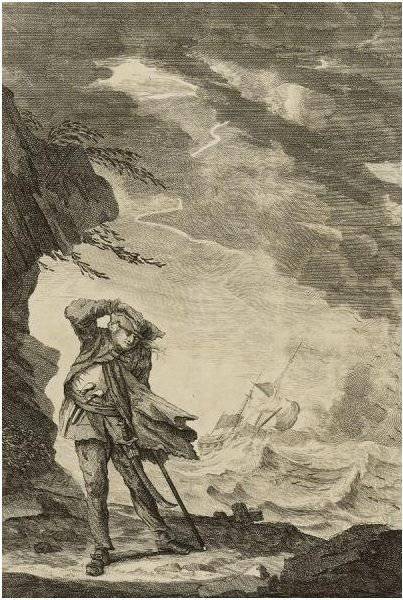
Pirates were real masters of torture. There are stories of pirates who set fire to their victims, poke their eyes, cut off limbs and even shoot them with cannons.
John Steele, who participated in Morgan's campaigns, wrote in a letter to the Secretary of State of England:
Cauterization by a pilot wick, or "St. Andrew's torture," was often used by West Indies filibusters to obtain valuable information from prisoners: the pilot wicks were inserted between the victim's twisted fingers, which were then set on fire. The wicks smoldered, causing the unfortunate victim unbearable pain.
Jamaica Lieutenant Governor William Beeston, in a report on the French pirates' raid on the island in 1694, reports:
Thus, if the pirates had notions of honor and nobility, it was only in relation to themselves, and even then not always. In relation to the prisoners were allowed anything, any atrocities.
After a successful voyage, the pirates returned to their base ports, the largest of which at various times were: Tortuga, Port Royal in Jamaica, Petit Goav in Espanyol, New Providence in the Bahamas, and others, where they organized grandiose spree.
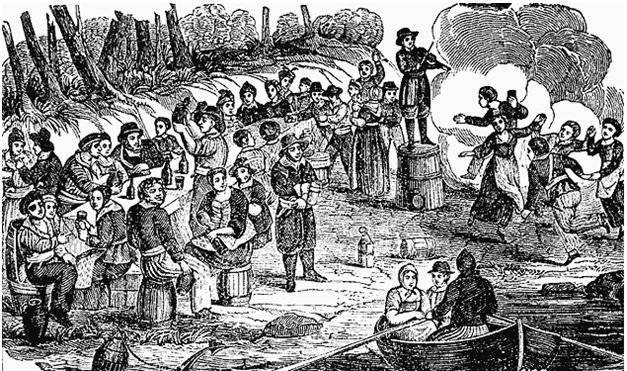
Perhaps nothing is more associated with pirates than a bottle of rum. Rum was invented in the XVI century. in the West Indies, as a by-product in the production of cane sugar. There are two versions of the origin of the word rum: according to one, the name comes from the Latin word succarum (sugar), on the other - from the English word rumbullion (fight, disorder). The word rumbullion called the process of fermentation of sugar cane juice before distillation.
The name itself - rum (eng. Rum) first appeared in the English colony on the island of Barbados in the early 17th century. Therefore, rum is sometimes called "Barbados water".
Raw material for the production of rum is molasses - molasses, made from sugar cane juice. From a ton of sugar cane, you get 100 liters of rum. The largest centers for the production of rum in the XVII-XVIII centuries. were in Jamaica and Barbados.
They stored rum in wooden barrels, from which it was poured into cups. The first wine bottles, reminiscent of modern, began to do only in the middle of the XVII century. in England. Thanks to the invention of new technology, the strength of glass has increased significantly. Quickly becoming a popular glass bottle from the second half of the 17th century. became the main container for bottling rum.
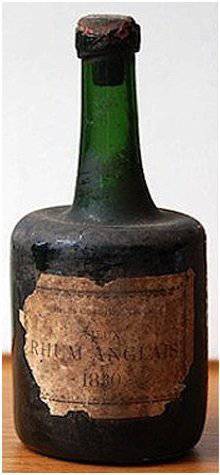
The well-known historian of piracy, Jean Merien, cites such words of a pirates to a contemporary as reproaches for excessive drunkenness and waste:
In the wonderful novel by Robert Louis Stevenson “Treasure Island” is very accurately described in terms of history, how the pirates burned through life. This is what John Silver says:
Indeed, in a short time the pirates managed to kill (drink, spend on prostitutes and gambling) everything stolen during a campaign. The whole system of pubs and brothels, specially designed for pirates, helped them in this.
On the scale of drunkenness among pirates say such figures. By 1692, the population of Port Royal was, according to various estimates, from 6500 to 10000 people. At the same time, there were at least a hundred pubs in the city, i.e. at least one tavern or tavern per hundred inhabitants, including women and children! And that's not counting public houses, which was not much less.
By the way, in the novel "Treasure Island" there is one fictional pirate attribute, which received universal fame - the black mark (English Black Spot), denoting the accusation put forward by the pirate community (or individual pirates) to one of its members in violation of the charter, rules, rules and customs. In the future, the black mark was repeatedly used in literature and cinema.
In reality, no black mark existed. In the tradition of some pirates of the Caribbean XVII-XVIII centuries. there was a handing over of the card of death, which was played by the peak ace. If a pirate was thrown such a card, it meant that he was threatened with death or he was not wanted to be seen here.
Surprisingly, among the pirates, there were black Africans (usually former slaves) who were full-fledged members of the team, had all the rights and obligations that other pirates shared the booty with everyone else. The existence of such an extremely unusual phenomenon for the XVII-XVIII centuries, and it is not only and not so much about the freedom of black Africans among pirates (this was also found in Europe), but to a greater degree the phenomenon of their absolute equality with whites, that relationships in the piracy community were centuries ahead of their time. And there were quite a lot of blacks among the pirates.
For example, from the 272 pirates of the crew of Bartolomeo Roberts, captured by 10 in February 1722, 75 turned out to be black Africans.
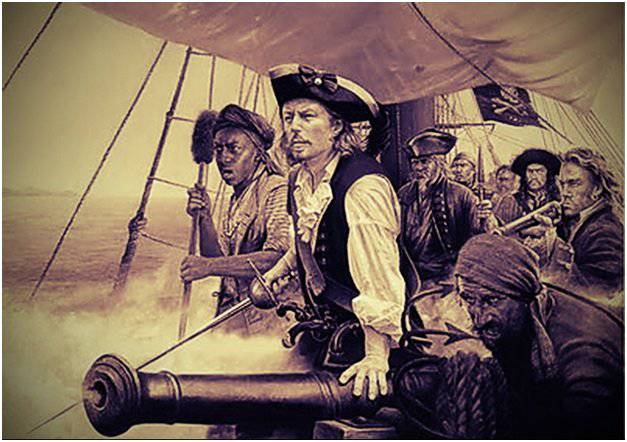
The pirates had no racial contradictions. Full and universal friendship of the peoples reigned on their ships.
Most pirates in the XVII-XVIII centuries. the English were always (from England and from the colonies of the New World), and somewhat less French and Dutch. Modern historians give such estimates of national composition among the pirates of the Caribbean and the Atlantic during the period from 1715-1725:
35% - English;
20-25% - Americans (residents of the English colonies in New England);
20-25% - blacks (were in almost every crew);
15-20% - French and Dutch (mostly natives of the West Indies);
5% - other nationalities.
To be continued.
Information